Hiten Shah on mastering the art of distributed product management

“Product management has not changed, but our way of working has.”
With over 17 years’ experience building distributed teams at the companies he has founded, Hiten Shah knows what it takes to make great products in a distributed world.
In a talk he gave at our recent Product Excellence Summit, the CEO & co-founder of FYI explained that although many things have changed in those 17 years, the fundamentals of the job remain the same. Adapting to the former and understanding the latter is the key to building excellent products in today’s distributed environment.
In case you missed the Summit, here’s an overview of the key points made during Hiten’s talk.

The key challenges of product management haven’t changed
Last year, Hiten and his team conducted a survey asking product managers what they thought their top challenges would be in 2020. The three main issues that came up were:
- Are we building the right product? 86% of the people we surveyed admitted that they don’t spend enough time talking to users.
- How do we pursue a clear strategy? 57% of respondents don’t spend enough (or any) time on goal-setting.
- How do we get buy-in for the roadmap? 60% spend (or waste) too much time on internal politics.
As Hiten points out, these challenges haven’t changed. They continue to come up, time and again, regardless of what year it is. And interestingly, they map out to our Product Excellence framework. When teams master the three pillars of Product Excellence—vision, strategy, and execution, they are well on their way to building excellent products. Yet accordingly to Hiten’s data, teams struggle with this.
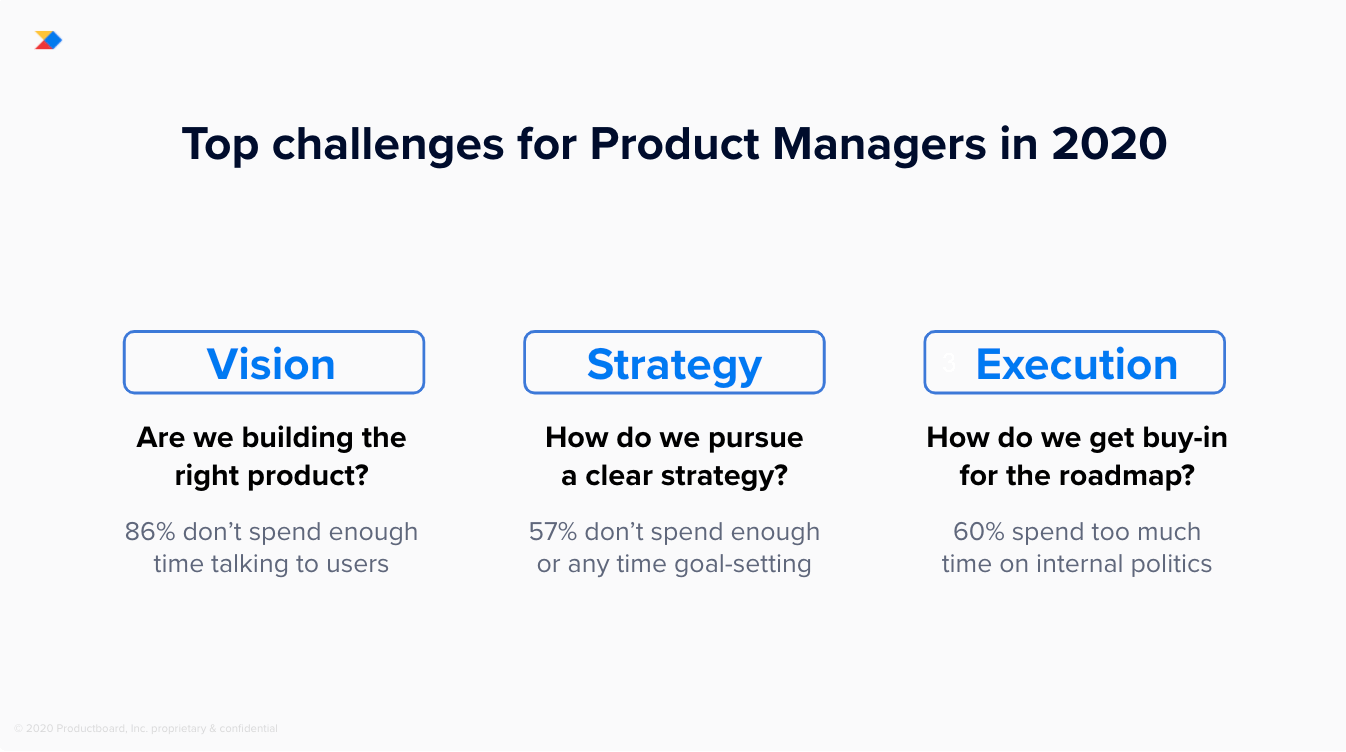
A little refresh on the three pillars of Product Excellence:
- Vision – a shared understanding of what customers really need
- Strategy – an effective plan informed by the right vision
- Execution – the whole team carrying out the plan flawlessly
Getting the vision, strategy, and execution right is the ultimate goal for any product manager, regardless of how their team is organized or where they are based.
The role of the product manager hasn’t changed
These core skills were essential in the pre-distributed world, and they continue to be essential today.
Last year, as part of his Product Habits newsletter, Hiten and his team conducted research into how 51 leading tech firms define the role of product manager in their job descriptions. This research revealed the following common themes.
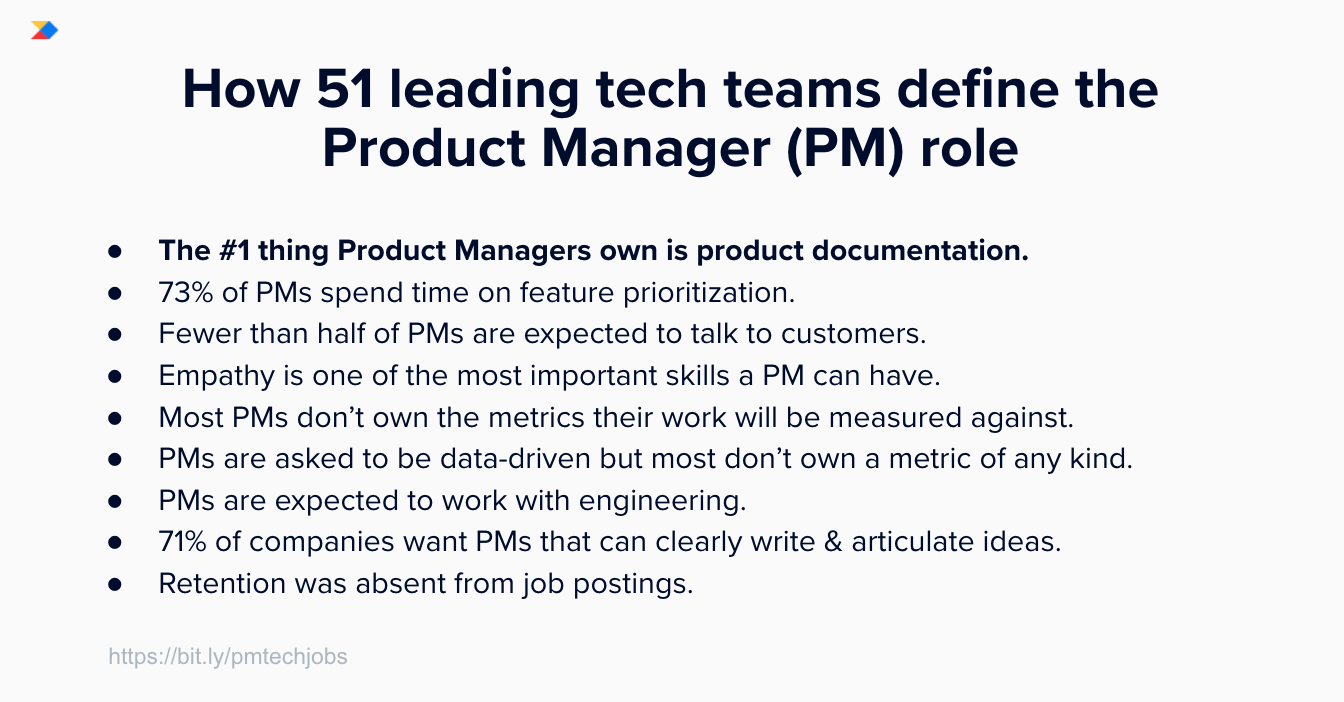
Companies want PMs who can write and articulate ideas clearly
The number one requirement was that PMs should own product documentation. This requires strong writing skills, allowing PMs to communicate technical details and customer needs clearly and effectively. It is also critical that they can use writing to present ideas and strategies in a convincing way.
“This idea of writing and communicating clearly sounds so pithy and simple. But it is one of the things we probably spend most of our time making sure that we’re really good at.”
Interpersonal and communication skills are essential
Companies specifically look for PMs who can influence a group, simplify complex issues, and move a product forward. Strong interpersonal skills and the ability to converse with stakeholders from all levels of the organization are key.
PMs are expected to work with engineering
The research showed that companies want PMs to understand technical architecture and be technically fluent enough to work with engineers.
“The simple way to think about product management is that we’re just helping to make really logical decisions that align with customer needs. And if we don’t understand the technical implications of them, we’re not going to be able to do that well. We’re going to run into all kinds of problems.”
Empathy is one of the most important skills a PM can have
Companies want PMs who are able to understand and communicate how their customers feel and articulate their needs.
“The one big thing that stands out for me is being a good human. And I think empathy really boils down to being a good human.”
As Hiten points out, if this information tells us anything, it’s that the role of product manager hasn’t really changed.
So what has changed?
The job may not have changed, but the way we work certainly has. This year alone has accelerated digital transformation by years, with the COVID-19 crisis forcing many companies to adopt a fully remote model virtually overnight. For better or worse, this has transformed the way we communicate and collaborate.
Traditionally, teams engaged in synchronous, offline collaboration. In other words, they’d all be in the same place at the same time – think conference rooms, whiteboards, watercooler conversations, and offsite retreats.
Now, with increasing numbers of people working remotely, the norm is synchronous and asynchronous online collaboration, with a growing need for the latter. This new approach involves documentation and wikis, voice and video calls, email and instant messaging, and screen-sharing.
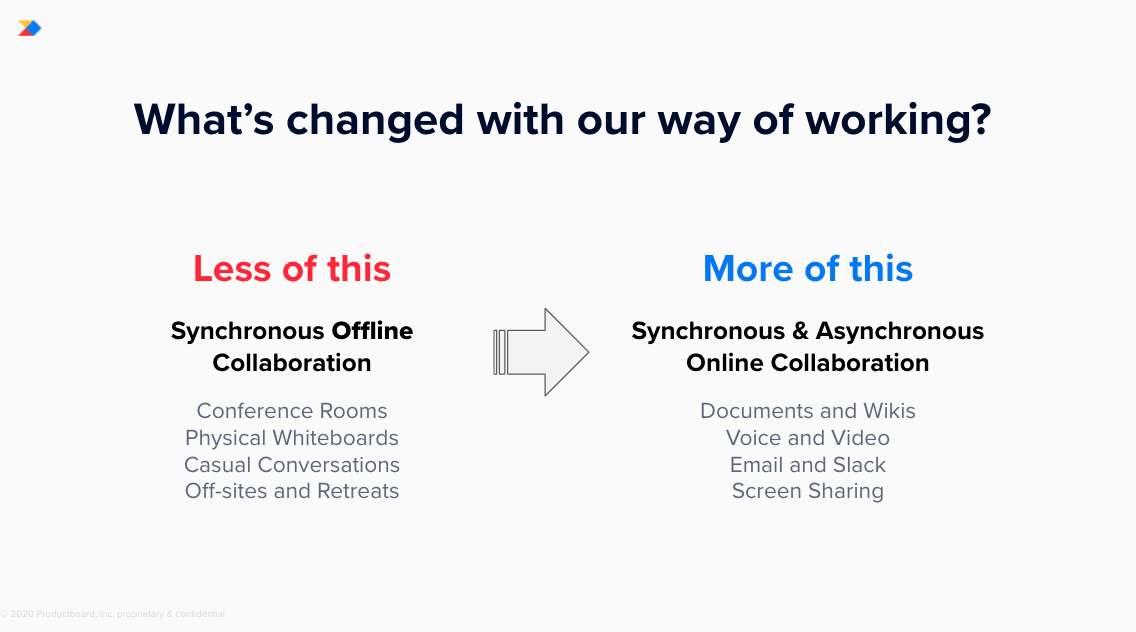
The three pillars of Product Excellence in a distributed age
Naturally, this shift to a distributed model affects the way we pursue our product vision, strategy, and execution, bringing up new challenges and forcing us to do things differently. Let’s take a closer look at how each pillar has been impacted.
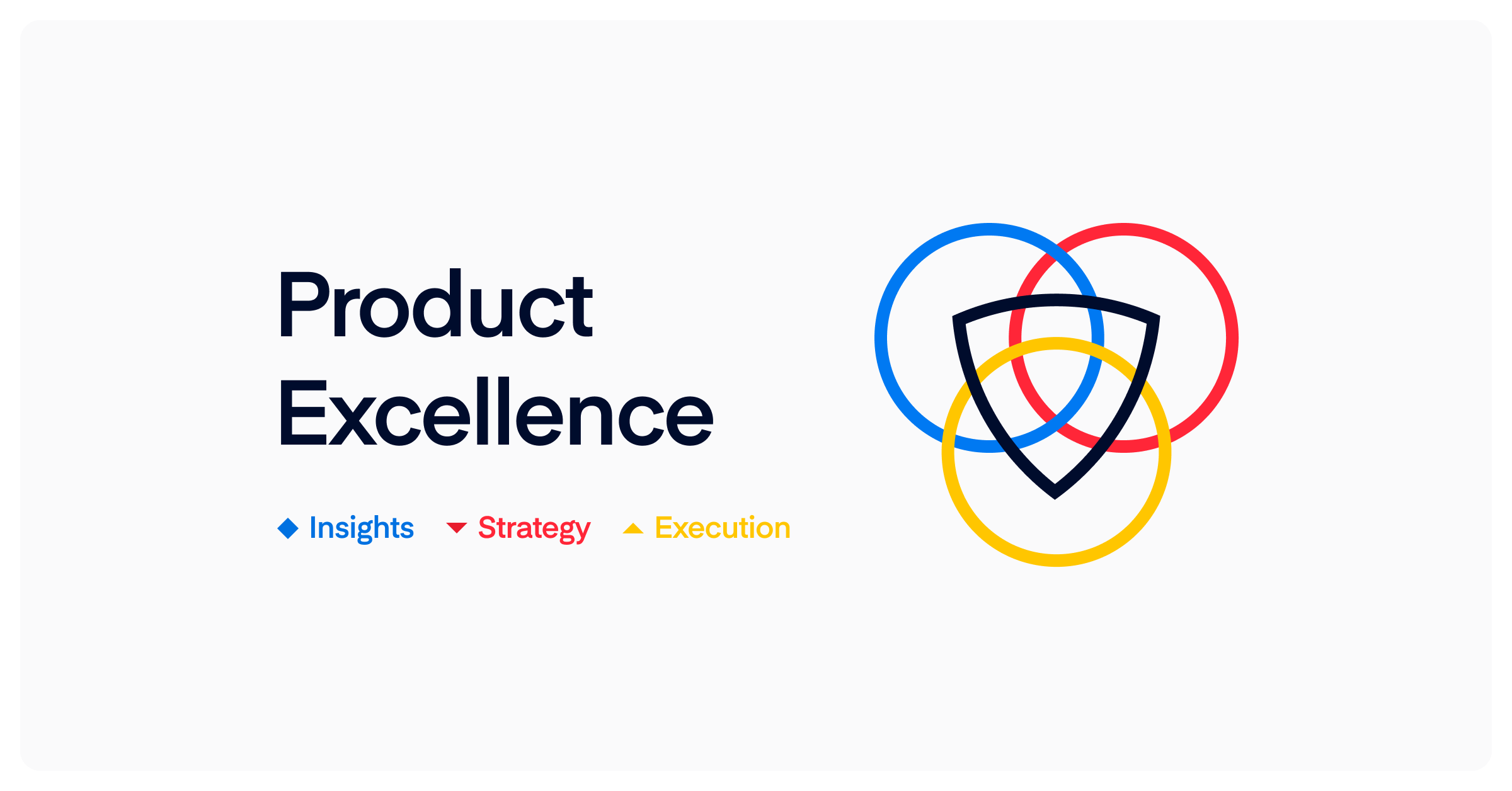
Vision
Before the events of this year, most product teams had plenty of opportunities to interact with each other face-to-face, including their customer-facing colleagues. They also had plenty of opportunities to conduct user research in-person, allowing them to understand the specific environment and context that their customers are working in.
Today, face-to-face interactions are either limited or impossible, so product teams must have better systems for capturing inputs asynchronously. On top of this, people are generally more stressed and less willing to talk, so you have to make better use of what you have.
With user research and interviews carried out over Zoom, it is much harder to understand the context around user problems. On the flip side, it is perhaps easier to involve developers and engineers in the process, who can listen in on calls or join virtual meetings with ease.
Strategy
Before the COVID-19 crisis, companies were able to set their strategies with fewer financial constraints. Product teams were competing against Sales and Marketing for resources and attention. And with synchronous, face-to-face communication the norm, there were more opportunities for group prioritization sessions, and for product managers and developers to align on user needs and objectives.
In response to the challenges of today, companies are having to set or reset their strategies under more constraints than perhaps ever before. As a result, marketing and sales activities have been reigned in, meaning a stronger focus on product. Now, prioritization must often happen asynchronously and virtually. And with fewer opportunities for ad hoc discussions, alignment must be systematized.
Execution
In the pre-remote era, teams and stakeholders were able to meet in person on a more informal basis. This helped ensure that there were no surprises in big meetings regarding the roadmap or where the product is heading. Anyone with any real sway would already know what to expect, helping product teams avoid explosive meetings where people push back strongly or undercut ideas.
Now, working in a distributed way, product teams have several pressing questions to answer. How do you involve key stakeholders from across the organization in the roadmapping process so that they are invested in the product’s direction? What does a roadmap presentation look like now? What does it look like to share your vision?
Getting product management right in a distributed world
For PMs, there is now a stronger need than ever for clear and open communication, concise writing and documentation, regular check-ins and follow-ups, and clarity around ownership – all of which require the right tools to be effective.
This new distributed model brings its own challenges, but we’re still playing the same game. All we have to do is adjust our tactics. For PMs, there is now a stronger need than ever for clear and open communication, concise writing and documentation, regular check-ins and follow-ups, and clarity around ownership – all of which require the right tools to be effective.
In addition, Hiten points out several key principles that have helped him and his team to build great products in a distributed way.
Build an organization designed to evolve
According to Hiten, it’s important to focus on the things in your work that don’t change, so when things do change and come into the bigger picture, you’re able to evolve. This way, you are designing the organization just like you would design your product.
Avoid worst-case scenarios by course-correcting fast
Hiten believes that if you can make a decision fast and it’s undoable, you should make that decision. After all, even if it’s the wrong one, it can be undone – and fast. And by building smaller, and building with more feedback in mind and more feedback-loop thinking, you will be able to course-correct faster.
Feedback is required for improvement of any kind
It goes without saying that if you want to improve something, you need to get feedback. The process of understanding what other people think is essential, because when you are trying to improve things, it’s usually for other people. And even if you’re trying to improve something for yourself, you still need feedback in order to make it better.
Reduce time to feedback
Above all else, Hiten called out one thing as the most important factor in making distributed product management successful: Time to feedback. The faster you can get feedback on your ideas and work, the better.
Whether it’s pair programming, user testing, user interviews, prototyping, post-mortems, code reviews, A/B testing, or any other feedback method, it’s all about getting other peoples’ opinions from different angles – and fast.
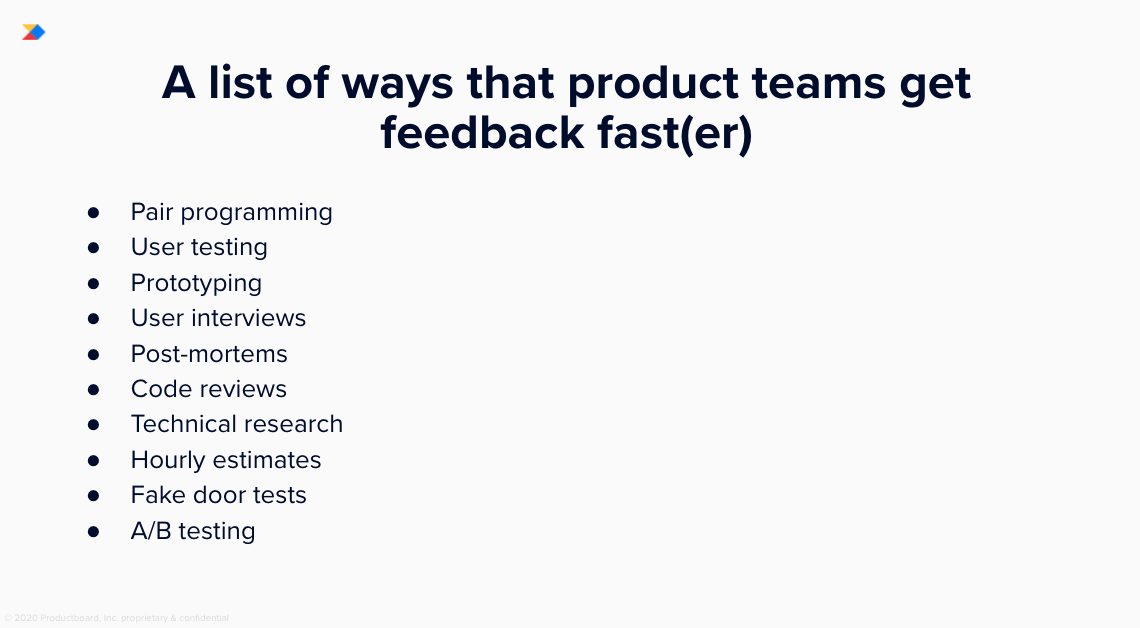
Final thoughts
To build excellent products, there are three things you have to get right: Vision, strategy, and execution. This was the case 17 years ago, when Hiten Shah founded his first company, and it is still the case today. But the ways in which we pursue these goals – and the challenges we may face along the way – are changing.
In today’s distributed world, it has never been more important to drive alignment, to have a process for gathering insights, to set and communicate a clear product vision and strategy, and to proactively share and collaborate on your product roadmap.





![The CPO’s Blueprint for Annual Planning: An Opportunity to Drive Change [Part 3]](https://www.productboard.com/wp-content/uploads/2024/11/strategy-blueprint-560x293.png)
